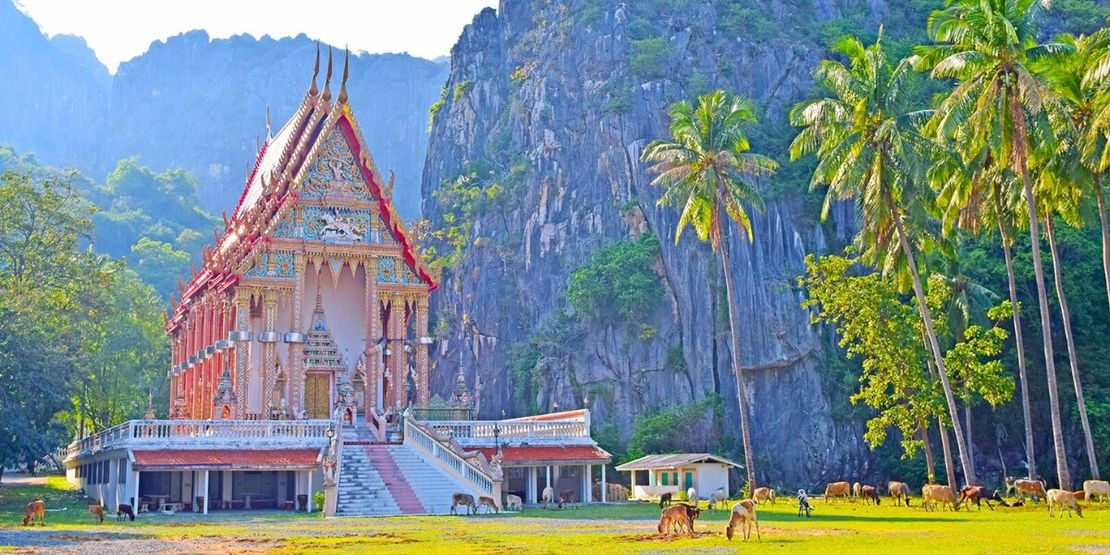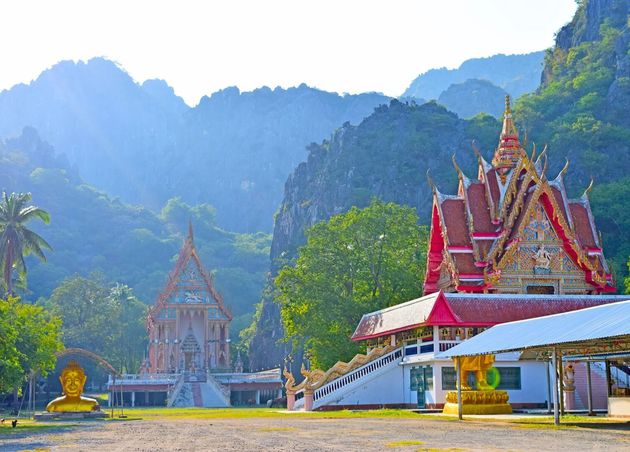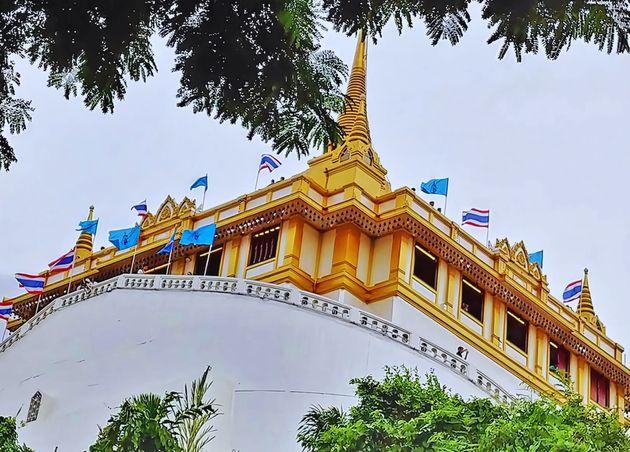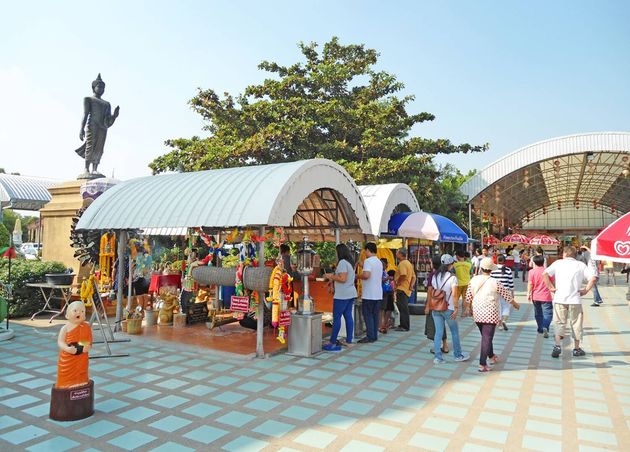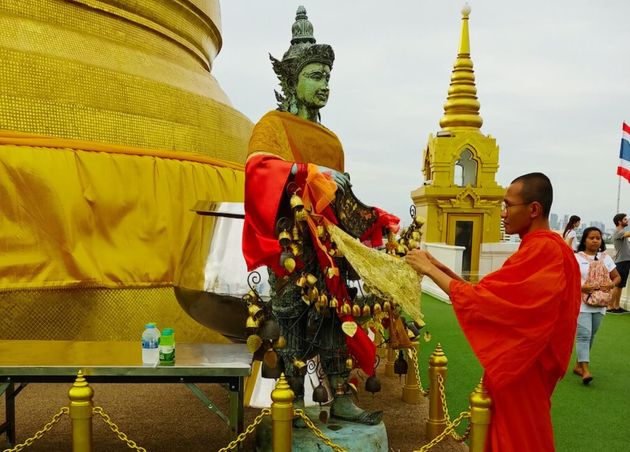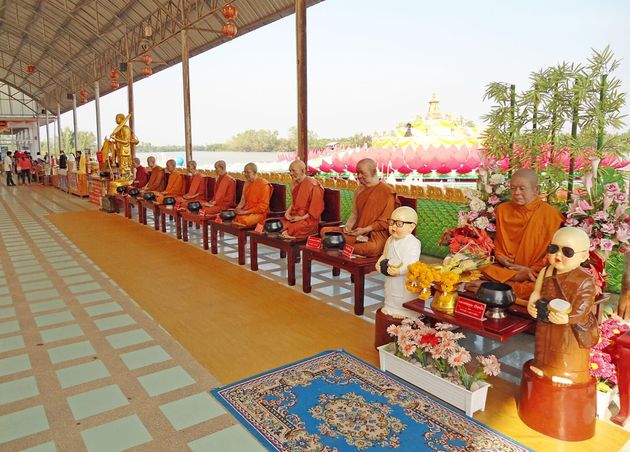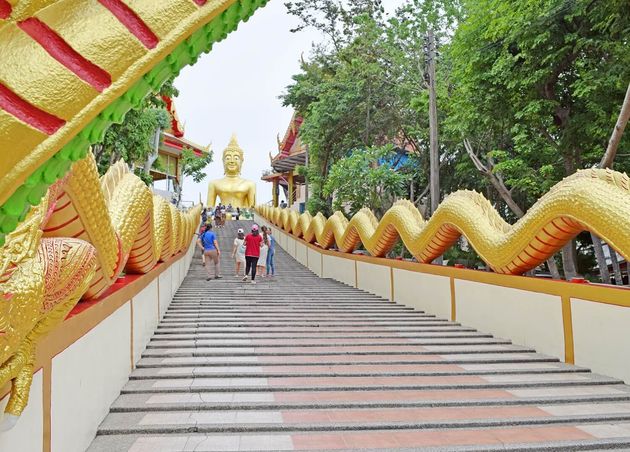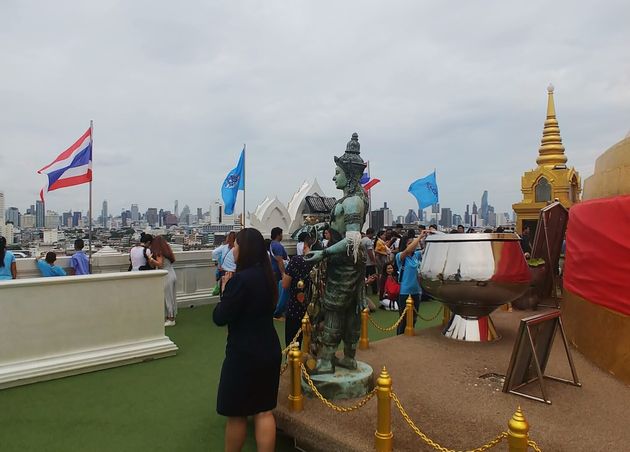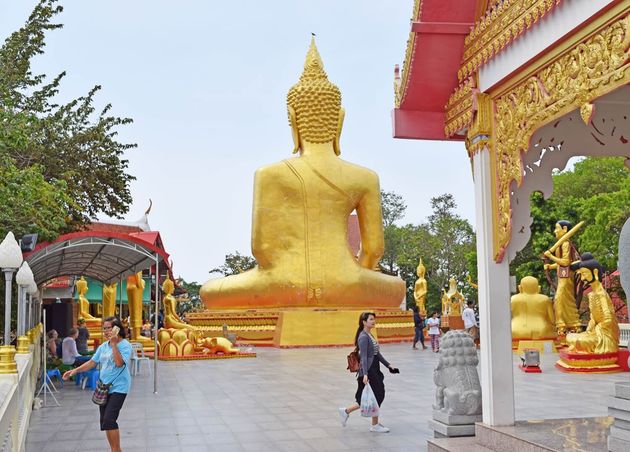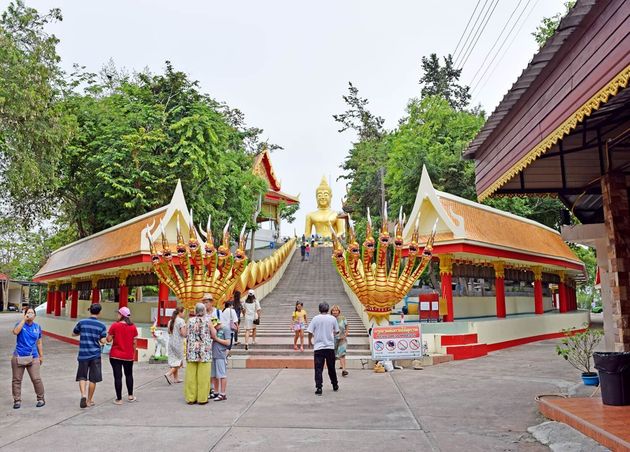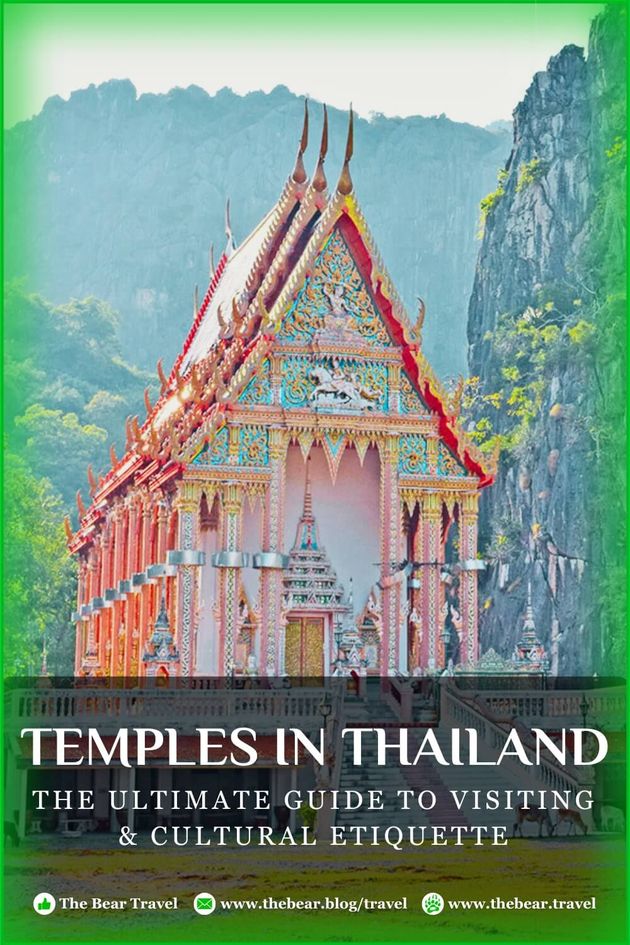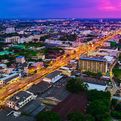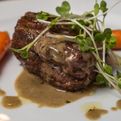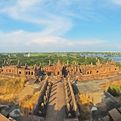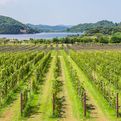Temples in Thailand: The Ultimate Guide to Visiting & Cultural Etiquette
One of the must-do things on travelers' favorite lists is visiting Thailand's temples. It is a country rich in history and culture, and its temples, or "wats," reflect this 📜 These sacred spaces are places of worship and also serve as important cultural and architectural landmarks. Visitors to Thailand can expect to find various temples with unique styles and histories.
However, when visiting temples in Thailand, it is important to be aware of the local customs and etiquette 🧐
In this guide, I will provide an overview of the most essential cultural etiquette to remember when visiting temples in Thailand, as well as tips for making the most of your temple-visiting experience 🤔 From dress code to behavior inside the temple, this guide will give you the knowledge you need to appreciate the beauty and significance of these sacred spaces fully.
By following this guide, you will be able to completely appreciate and understand the significance of the temples in Thai culture and make your visit a memorable one 🧑🎓
Why Should You Visit Temples in Thailand?
Temples in Thailand, also known as "wats," are significant cultural and spiritual sites that offer visitors an opportunity to learn about Thai history, culture, and religion 📜 They are also architectural and artistic treasures featuring intricate designs, colorful decorations, and stunning sculptures.
Visiting temples in Thailand provides a deeper understanding of Buddhism and its role in Thai society 🧐 Many temples have important religious artifacts, such as statues of the Buddha, and offer visitors the opportunity to participate in rituals, such as making offerings or meditating.
Additionally, many temples are located in beautiful natural settings, such as on hilltops or in lush gardens, which can provide a peaceful and serene atmosphere for visitors 🧑🎓 So, it can be a unique and enriching experience that allows any visitors to immerse themselves in Thai culture and spirituality.
🧑🎓 Quick Trivia!
Thailand's temples are deeply connected to Buddhism, the country's main religion. Thai temples are not only places of worship but also serve as centers of learning and community for the local people.
Must Visit Temples in Thailand
The Land of Smiles has so many temples that it is impossible to visit all of them 📜 I think it is important to have a thorough experience of what Buddhist temples are like in Thailand, so I chose the most representative ones.
In Krung Thep Maha Nakhon (Bangkok), you cannot miss Wat Phra Kaeo and Wat Pho, two symbols of the capital city, full of history and beauty 🧐 Ayutthaya and Sukhothai are among the most visited cities around the capital. It is because their historical parks are a great opportunity to explore the ancient glory of the past kingdoms.
The temples in the north of Thailand can be different from the rest of the temples in the country while providing a different experience for its visitors 🤔 In Chiang Mai, which is especially famous for its temples, I recommend visiting Wat Chedi Luang, the heart of the city, and Wat Phra Singh, maybe the most beautiful temple of all Thailand. For something even more different, go to the White Temple in Chiang Rai, an example of modern architecture blended with tradition 📜
The Best Temples In and Around Bangkok
Wat Arun
Wat Arun, also known as the Temple of Dawn, is a Buddhist temple in Krung Thep Maha Nakhon (Bangkok) located on the west bank of the Chao Phraya River 🧑🎓 It is known for its colorful and intricate decorations, including millions of Chinese porcelain pieces. The temple is a major tourist attraction and is considered one of Bangkok's most beautiful temples 🤔
Wat Pho
Wat Pho or famously known as the Temple of the Reclining Buddha in Krung Thep Maha Nakhon (Bangkok), is the city's oldest and largest temple and is considered a center for Thai medicine and massage 🧑🎓 The temple is known for its 46-meter-long, 15-meter-high golden statue of the Buddha in a reclining position, representing the Buddha's passing into Nirvana. The statue is covered in gold leaf. It is also decorated with intricate mother-of-pearl inlay 📜
Wat Saket
Wat Saket (The Golden Mount) is a Buddhist temple in Krung Thep Maha Nakhon (Bangkok). It is located on a man-made hill with a temple complex at the top and a large golden stupa at the summit 🧑🎓 The temple is known for its panoramic views of the capital and peaceful atmosphere. It is also home to a large bell that is usually rung to signal the start of Buddhist Lent.
Visitors can climb the 300 steps to reach the top of the temple and its golden chedi and enjoy the view of the city 📜 It's also a popular place during the Loy Krathong festival, where thousands of people come to release their Krathong on the pond.
Wat Phra Kaeo
Wat Phra Kaeo (Wat Phra Kaew), or Temple of the Emerald Buddha in Krung Thep Maha Nakhon (Bangkok), is considered the most important Buddhist temple in Thailand and is the residence of the Emerald Buddha, a small statue made from a single piece of jade 🤔 The statue is highly revered and is considered the palladium of the Kingdom of Thailand.
Nestled amidst the sprawling expanse of the Grand Palace, the temple has resided within these hallowed grounds, serving as the regal abode of the Kings of Siam, and later Thailand, for over two centuries 🧑🎓 Visitors can see the temple's many buildings, including the Wat Phra Kaew, the Phra Thinang Chakri Maha Prasat, and the Phra Thinang Dusit Maha Prasat.
The Best Temples In and Around Ayutthaya
Ayutthaya is a city located in Central Thailand and was the capital of the Ayutthaya Kingdom from 1351 to 1767. It is known for its historic temples and ruins, now designated as a UNESCO World Heritage Site 📜 Some notable temples in Ayutthaya include:
Wat Phra Sri Sanphet
Wat Phra Sri Sanphet was the most important temple of the Ayutthaya Kingdom. It was the residence of the kingdom's three principal Buddha images 🧑🎓 The temple's main stupa is one of the largest in the city and is adorned with intricate stucco work.
Wat Mahathat
Wat Mahathat is known for its impressive Buddha head that is entangled in the roots of a banyan tree and is considered one of the most iconic images of Ayutthaya 🤔
Wat Chaiwatthanaram
King Prasat Thong built Wat Chaiwatthanaram in the 17th century and is known for its large stupa and beautiful architecture 🧐 Its design blends traditional Thai and Khmer styles and features many smaller shrines and chedis.
Wat Ratchaburana
The Wat Ratchaburna was built by King Borommarachathirat II in the 15th century and is known for its large stupa and beautiful architecture 📜 Each dawn unveils the temples' grandeur, inviting daily visitors to embark on a captivating journey through the captivating ruins, delving deep into the rich tapestry of the Ayutthaya Kingdom's storied history.
Must Visit Temples In and Around Chiang Rai
Wat Rong Khun
Wat Rong Khun, also known as the White Temple, is a contemporary Buddhist temple in Chiang Rai. The artist and architect, Professor Chang Singsuwan, designed it in 1997 🧐 The temple is known for its unusual and striking white color and intricate and otherworldly design, which features many modern and unconventional elements such as glass, mirrors, and ceramic tiles.
It features many statues of Buddha and other religious figures and several smaller buildings and structures decorated in the same white and gold color scheme 📜 However, Wat Rong Khun is an unusual and unexpected sight in the region, as it is an unorthodox temple in terms of its art and design. It is also an interesting place to visit for those looking for something unique and out of the ordinary and those interested in contemporary art and architecture 🧑🎓
Wat Rong Seur Ten (The Blue Temple)
The Blue Temple is located in the city of Chiang Rai, known for its striking blue color and intricate gold leaf decorations 🤔 It was designed and built by the famous Thai artist and architect Ajarn Ohk, who also created the White Temple in Chiang Rai.
The temple is a unique blend of traditional Thai and Chinese architectural styles and is decorated with intricate sculptures, mosaics, and glassworks. The main feature you can see here is a large blue-colored pagoda with golden accents, which is said to symbolize the purity and serenity of the Buddhist teachings 🧑🎓
Must Visit Temples In and Around Chiang Mai
Wat Chedi Luang
Wat Chedi Luang is a temple located in the city of Chiang Mai. It dates back to the 14th century and was built during the reign of King Saen Muang Ma 🧑🎓 The temple is known for its large chedi (stupa), which is one of the most important and recognizable landmarks in Chiang Mai.
It was originally built to house the ashes of King Saen Muang Ma and his family, but it was later converted into a Buddhist temple 📜 The chedi was once one of the tallest buildings in the city, but it was damaged in an earthquake in the 16th century and now stands at a height of around 60 feet.
Despite the damage, the chedi remains an impressive structure and is a popular tourist destination. The temple also has several important Buddhist statues, including a large bronze standing Buddha, and it is an important center of Buddhist worship in Chiang Mai 🧐 Being one of the most visited temples in the city, Wat Chedi Luang is an important temple in Chiang Mai.
Wat Phra Singh
It is one of the city's most important and respected temples and is known for its beautiful architecture and important religious artifacts 🧑🎓 The temple was built in the 14th century, during the reign of King Phaya Kham Fu, and named after the Phra Singh, a revered Buddha statue that is housed within the temple.
The temple's main attraction is the Phra Singh statue, which is a beautiful and highly detailed representation of the Buddha 📜 The statue is made of golden stucco and is considered one of the most important and beautiful examples of Lanna-style Buddhist art. The temple also houses several other important Buddhist statues, including a giant bronze standing Buddha and a replica of the Emerald Buddha.
So it is an important religious and cultural site and a popular tourist destination in Chiang Mai 🧐 Moreover, it's a great place to learn about Buddhism and the Lanna culture of Northern Thailand and admire the beautiful architecture and art.
Wat Sri Suphan
The Silver Temple is known for its intricate silver and gold decorations, which adorn the temple's walls, doorways, and statues. It is also home to a large traditional northern Thai art collection, including lacquerware and woodcarvings 📜 Wat Sri Suphan is also considered an active temple and serves as a center for traditional silversmithing and its training.
Wat Phra That Mae Yen
Wat Phra That Mae Yen, also known as the White Buddha, is the temple known for its large white statue of the Buddha that sits on a hilltop and can be seen from many parts of the city 🧑🎓 The temple also features several other statues and structures, including a chedi (stupa) and a vihara (ordination hall). So, it is a popular tourist destination and is considered an important religious site in Northern Thailand.
Doi Suthep
Doi Suthep is a mountain and national park located in Chiang Mai province. It is home to Wat Phra That Doi Suthep, a Buddhist temple that is a major pilgrimage site for Thai Buddhists 🤔 The temple is located on the mountain's summit. It offers panoramic views of Chiang Mai, while the park is somehow a popular destination for hiking and trekking. Visitors can also explore the many waterfalls and caves in the area 🧑🎓
Sukhothai Historical Park
Surrounded by the allure of Sukhothai City, Thailand, the Sukhothai Historical Park proudly stands as a UNESCO World Heritage site, a treasured testament to the region's cultural significance and historical splendor 🧑🎓 It contains the remains of the ancient Sukhothai Kingdom, the first independent Thai kingdom that existed from the 13th to the 15th century. It features many temples, including Wat Mahathat, Wat Si Chum, Wat Sra Sri, and Wat Sa Si 🧐
Wat Mahathat is the most famous temple in the park and is known for its large central prang and its many smaller chedis (stupas) surrounding it. Wat Si Chum is also notable for its large standing Buddha statue 📜 The temples in Sukhothai Historical Park are examples of the unique Sukhothai architectural style and are considered to be some of the most important historical sites in Thailand.
The Best Temples on the Southern Islands
The Big Buddha Phuket
The Phra Putta Mingmongkol Akenakkiri is a large Buddha statue located on the island of Phuket in Thailand. The statue is made of white Burmese marble and is 45 meters tall 📜 It is located on the Nakkerd Hills between Chalong and Kata. It offers beautiful and stunning panoramic views of the surrounding area. It is definitely a popular tourist destination and pilgrimage site for Buddhists.
The Big Buddha statue is also a religious and cultural symbol of the island, visible from many places from the south of the island 🧐 Visitors can climb to the statue's base for a closer look and take in the views.
Tiger Cave Temple
Amidst the picturesque Krabi province of Thailand, the Tiger Cave Temple, renowned as Wat Tham Sua, proudly graces the landscape as a sacred Buddhist sanctuary 🤔 It is situated in a limestone cave and is known for its steep staircase that leads to a viewpoint at the top of the cave. The viewpoint offers a breathtaking panoramic view of the surrounding area, including the nearby town of Krabi.
This temple is also known for its resident monkeys roaming freely around the temple grounds. However, it is a popular destination for tourists and Buddhists, who come to explore the cave, pay homage to the temple's resident monks, and enjoy the natural surroundings 📜 The temple also has many religious shrines and statues in the cave.
The Best Temples on the Northern Islands
The Big Buddha
The Big Buddha, also known as Wat Phra Yai, is a 12-meter-tall Buddha statue located on Koh Samui's island. It is located on the northeastern coast island, which is near the town of Bangrak, and is visible from many areas on the island 🧑🎓 This giant statue is made of concrete and is gold-painted. It is a major religious and cultural symbol of the island, and it is considered one of the most famous landmarks of Koh Samui.
Visitors to the Big Buddha can climb to the statue's base for a closer look and take in the views of the surrounding area 🧐 The temple complex that surrounds the statue also contains many other smaller statues of Buddha and other religious figures, as well as several shrines and pavilions.
Wat Plai Laem
Another best temple on the Northern islands in Thailand is Wat Plai Laem, known for its large white statue of Guanyin, the goddess of compassion and mercy in Chinese and East Asian Buddhism 🧑🎓 The statue is 18 meters tall and is located on the edge of a lake, surrounded by a garden filled with other statues and shrines.
It also features a large seated Buddha statue and a traditional Thai-style temple building 📜 Wat Plai Laem is a popular destination for tourists and residents, who come to admire the statue, pay respects to the temple's resident monks, and enjoy the nice, peaceful and serene atmosphere of the temple grounds.
Visiting Temples in Thailand: What to Bring
When visiting temples in Thailand, it's important to be prepared and respect the cultural and religious customs of the temples you will be visiting 📜 Don't forget to bring these with you:
- Modest clothing: Many temples in Thailand require visitors to dress modestly, with covered shoulders and legs. So it's best to wear lightweight, breathable clothing that covers your arms and legs.
- Footwear: The majority of the temples in Thailand would require their visitors to remove their shoes before entering, so it's best to wear shoes that are easy to slip on and off.
- Sunscreen and insect repellent: When you visit temples in tropical areas that can be pretty hot and sunny, it's essential to protect your skin from sunburn. Insect repellent can also be helpful in keeping mosquitoes and other bugs at bay.
- Camera: You'll likely want to take photos of the beautiful temples and statues you'll see. At the same time you visit, be respectful of the rules and customs of each temple. Some temples may restrict photography or require you to pay a fee to take photos.
- Cash: There will have donation boxes, or you may charge an entrance fee, so it's best to have some money on hand.
- Water and snacks: If you plan to do a lot of temple hunting, it's essential to stay hydrated and to bring snacks to keep your energy levels up.
- Respectful attitude: Remember that temples are sacred spaces, and it's important to respect the customs and traditions of the temple and the people who visit there. Show respect and humility when visiting the temple; it can be a more meaningful experience for you.
Guide to Cultural Etiquette in Thailand
The Buddhist Tradition in Thailand
Buddhism is Thailand's main religion and strongly influences the country's culture and way of life 📜 Buddhism in Thailand is of the Theravada tradition, also practiced in Southeast Asian countries (e.g., Myanmar, Cambodia, Laos, and others). The Theravada tradition emphasizes the importance of personal spiritual development and the attainment of enlightenment through meditation and the study of the Buddha's teachings 🧑🎓
In Thailand, Buddhism is deeply intertwined with the people's daily lives. Monks are highly respected figures in Thai society, and many Thai men will spend some time as a monk as part of their spiritual development 📜 Monks can be seen walking around the streets in their saffron robes, collecting alms, and offering blessings to the community. Temples are also an important part of Thai culture and can be found in almost every village and town.
However, Buddhism is an integral part of Thai culture and society, and its influence can be seen in many aspects of daily life 🧐 Visitors to Thailand will likely encounter Buddhism in one form or another. They should make an effort to understand and respect the customs and traditions of this important religion.
Monks in Thailand
Monks are an integral part of Thai society and play an important role in Thai Buddhism 📜 Monks in Thailand are ordained members of the Buddhist sangha, or a community of ordained individuals who have taken vows of celibacy, poverty, and obedience.
In Thailand, the monastic tradition is based on Theravada Buddhism, which is also practiced in other Southeast Asian countries such as Myanmar, Cambodia, and Laos 🧐 Monks are highly respected figures in Thai society and are considered role models of virtue and wisdom. They are also considered a source of spiritual guidance and support for the community.
So, visitors to Thailand can observe and learn more about the monastic tradition by visiting temples and observing the daily life of the monks 🧑🎓 It's important to remember that monks are not to be touched, respect their celibacy, and not engage in conversation or give them anything directly. Instead, you can give things to the temple or other persons to offer to the monks.
How to Show Respect to Monks in Thailand?
Showing respect to monks in Thailand is an important aspect of Thai culture and Buddhism. Follow these guidelines when interacting with monks in Thailand:
- Dress modestly
- Do not touch a monk
- Do not give things directly to a monk
- Do not engage in conversation
- Show respect during ceremonies and rituals
- Show respect when entering a temple
- Show respect to the temples
By following these guidelines and showing respect for the culture and customs of the monks, you can interact with them in a way that is appropriate and meaningful 🤔 Remember that the most important thing is to show respect and humility and to be mindful of their spiritual practice and devotion 🧑🎓
Dress Code for Visiting Temples in Thailand
When visiting temples in Thailand, it's important to dress modestly and respectfully to show appropriate reverence for the sacred space 🧑🎓
- Cover your shoulders
- Cover your legs
- Avoid revealing clothing
- Wear comfortable shoes
- Avoid clothing with religious or political symbols
- Dress appropriately for the weather
It's important to note that dress codes may vary depending on the temple you visit, so it's always a good idea to check with temple authorities or guides before entering 🤔
Temples in Thailand: Special Rules for Women
In Thailand, women are expected to follow certain rules and customs when visiting temples and show respect for sacred spaces and monks 🧐 Here, I'll provide a few guidelines to keep in mind as a female traveler when visiting temples in Thailand:
- Dress modestly: Women are expected to dress modestly when visiting temples, with clothing that covers the shoulders and legs. Avoid revealing clothing such as tank tops, shorts, or short skirts.
- Avoid touching monks: Women are not allowed to touch monks, as it is considered a violation of their vows of celibacy. Women should avoid physical contact with monks and show respect by bowing the head.
- Do not sit next to monks: Women should avoid sitting next to monks or touching the monk's robe.
- Be mindful of the menstrual cycle: Menstruating women are not allowed to enter certain parts of the temple or participate in certain ceremonies. It's best to check with temple authorities or guides before entering a temple to ensure that you follow the proper customs.
- Show respect during ceremonies: Everyone, including women, should show respect during ceremonies and rituals by not disrupting the ceremony or acting disrespectfully.
- Follow temple rules and regulations: Each temple may have different rules and regulations for women visiting. Hence, checking with temple authorities or guides before visiting is best.
- Show respect to the temple: Women should show respect to the temple by not smoking, eating, or acting disrespectfully.
Taking Photos in Thai Temples
Taking photos in Thai temples can be an excellent way to capture memories and share your experiences 📜 Still, it's important to do so respectfully and mindfully.
Follow Temple Rules and Regulations
Each temple may have different rules and regulations when it comes to photography. Some temples may prohibit using cameras or video recording altogether, while others may have specific areas where photography is allowed 🧑🎓 It's best to check with temple authorities or guides before taking photos.
Be Discreet
Many Thai people are sensitive to using cameras or smartphones in temples, so it's best to be discreet when taking photos and to avoid taking photos of people without their permission 🤔
Show Respect
Remember that temples are sacred spaces; showing respect and humility when visiting is essential 📜 Avoid taking photos in a way that might be seen as disrespectful or disruptive.
Be Mindful of the Culture
Be mindful of Thai culture and customs when taking photos in temples 🧑🎓 Some activities, such as taking pictures of monks or statues, might be seen as disrespectful, so it's best to be aware of the cultural context and to take photos accordingly.
Be Mindful of the Lighting
Temples usually have low light conditions, so it's important to be mindful of the lighting when taking photos and to adjust your camera settings accordingly to avoid underexposure or motion blur 📜
Don't Take Photos of Restricted Areas
Some areas of the temple may be restricted and off-limits to photography 🤔 Respecting these boundaries and not taking photos of restricted areas is essential.
Using Smartphones in Thai Temples
Smartphones are generally allowed, but there are some important considerations to keep in mind 🧑🎓
Be Mindful of the Time and Place
Many temples are sacred spaces, and being respectful and mindful of the time and place when using your smartphone is important 📜 Avoid using your phone in areas where it might disturb others, such as during religious ceremonies or while people pray.
Follow Temple Rules and Regulations
Each temple may have different rules and regulations regarding using smartphones. Some temples may prohibit using cameras or video recording altogether, while others may have specific areas where photography is allowed 🤔 It's best to check with temple authorities or guides before using your phone.
Show Respect
Avoid using your phone in a way that might be seen as disrespectful or disruptive
Common Terms to Know When Visiting Temples in Thailand
Here are some terms you may find useful when visiting temples in Thailand:
- Alms-giving: The practice of giving food or money to monks.
- Buddha: Buddha is the founder of Buddhism (Siddhartha Gautama)
- Buddhism: The predominant religion in Thailand revolves around the teachings of the Four Noble Truths and the Eightfold Path, which serve as the guiding principles to attain enlightenment.
- Dharma: The teachings of the Buddha.
- Incense: Sticks or cones of scented materials burned as an offering to the Buddha or other deities.
- Meditation: A practice central to Buddhism and many other spiritual traditions, in which the mind is trained to focus on a single point of reference, such as the breath, to achieve a state of inner peace and understanding.
- Monks: Ordained men who have taken vows of celibacy and follow a strict code of conduct.
- Offering: A traditional way to show respect and make a donation to the temple or the monks.
- Robe: The traditional clothing worn by Thai monks.
- Sangha: The community of monks and laypeople who follow the Buddha's teachings.
- Wai: A traditional Thai greeting where the hands are pressed together in a prayer-like position.
- Wat: The Thai word for temple.
Visiting temples in Thailand is a unique and enriching experience. It offers a glimpse into the country's rich cultural and religious heritage and an opportunity to connect with the local community 🧐 However, being mindful of cultural etiquette when visiting these sacred spaces is important.
Showing respect and understanding of the customs, traditions, and practices of the temple and its inhabitants will ensure a positive and meaningful experience for both the visitors and the local people 🧑🎓 With that, you will be able to fully appreciate and understand the significance of the temples in Thai culture and make your visit in Thailand a memorable one.
📍Pin it!
🧑🎓 Vocabulary Time!
Artifact
: an object made by a human being, typically one of cultural or historical interest
Contemporary
: living or occurring at the same time
Etiquette
: refers to the established and customary code of polite behavior observed within society or specific professional and social groups
Kingdom
: a country, state, or territory governed by a King or Queen
Monastic
: pertains to monks, nuns, or individuals living under religious vows, as well as the buildings where they reside
Sculptures
: the art of crafting three-dimensional representative or abstract forms, often achieved through techniques like carving stone or wood or casting metal or plaster
Spiritual
: refers to or pertains to matters of the human spirit or soul, as distinguished from material or physical aspects
Stucco Work
: any of the various types of cement or plaster used for coating outside walls
Dr. Theodore (Professor Bear)
Hi! I'm Dr. Theodore Bennet (Professor Bear), your scholarly travel companion who brings history to life with immersive tours and expert guides. With a Ph.D. in History and years of travel writing experience, I offer authoritative insights for unforgettable journeys.
The Bear Travel | Experience like a Local
A fast-growing Thailand Travel Blog written by Expats and Thais since 2017. We will share our experiences and ideas from an insider point of view for you to create your own unique Thailand experience.
For the latest news and events about The Bear Travel, follow us on Facebook, Instagram, Twitter, Pinterest, or YouTube.
For any issues, concerns, or queries, don’t hesitate to CONTACT us.
Recommended for you
Travel to Nakhon Ratchasima (Korat) Guide: Everything You Need to Know
Dr. Theodore (Professor Bear)
News Steaks & Grill: A Top-Notch Steakhouse in Jomtien
Tle (Hungry Bear)
Travel to Koh Chang Guide: Everything You Need to Know
Dr. Theodore (Professor Bear)
Ancient City: A Journey Through Time in Samut Prakan
The Bear Team
Travel to Bangsaray: A Full Day Tour Itinerary
Shane, The Bear Traveler
Freelance Essentials: Why and How to Back Up Your Computer Safely
Faheem Hussain (Nomad Bear)


